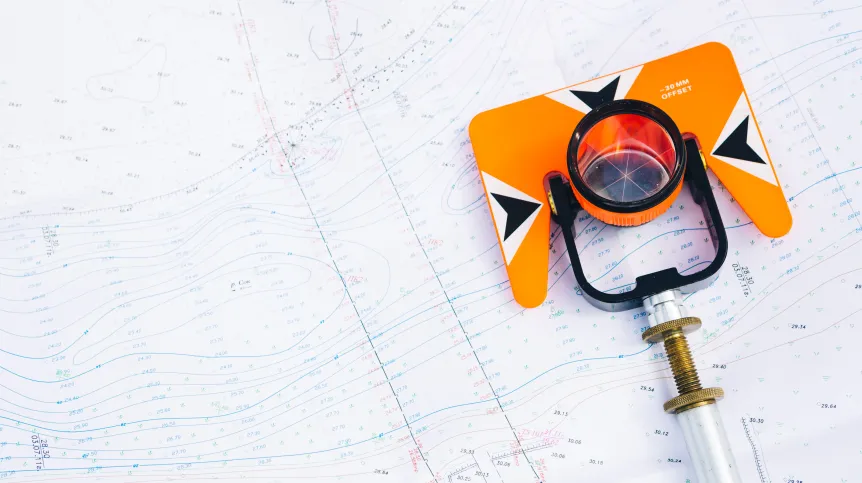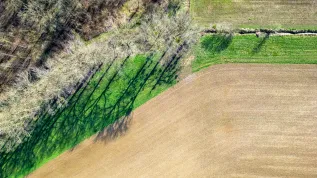
Scientists from the Polish Geological Institute and the Military University of Technology have described extremely accurate observations of the Earth's surface deformation in the journal Tectonophysics.
HOW TO CHECK IF THE TERRAIN DEFORMS
Dr. Andrzej Araszkiewicz from the Institute of Geospatial Engineering and Geodesy at the Faculty of Civil Engineering and Geodesy at the Military University of Technology says that since 1996 Polish reference stations have been recording the signal received from Global Navigation Satellite Systems (GNSS), popular GPS and later also from other constellations.
This signal, properly processed, is converted into the positions of these stations.
He said: “This operation is similar to navigation in a phone or a car, but the process itself is much more complicated and therefore more accurate. We determine the position of each station every day with an accuracy of 1-3 mm.’
Based on many years of changes in the point location, researchers determine their average strain rates. Then they examine the mutual relations between the movements of individual stations.
Dr. Araszkiewicz said: “If the two stations are very slowly approaching each other, in an ideal scenario we can say that there has been a terrain deformation. This way, we study the nature of the rate of deformation.”
He added that the measurement concerns the movement of the antenna on the building. Scientists interpret this movement geodynamically and ultimately analyse the entire area to determine the strain rate across the country.
SMALL SEISMIC HAZARDS WITHOUT SPECIAL EFFECTS
Most of the calculations such as those described in the paper are carried out in areas near the boundaries of tectonic plates, where their interactions are visible on the Earth's surface. The seismic hazards are much greater in those areas; in Europe, such areas include Greece and Italy. Where did the idea to use the observations of areas in Poland come from?
Araszkiewicz said: “We decided to check whether the GPS measurements in tectonically stable regions were consistent with the geological data. Of course, the data interpretation has to be careful. In Poland, a 100-kilometer section changes by only about half a millimetre per year! This, of course, does not apply to areas where seismicity is caused by human activity. Deformations in those areas are much larger and we have been able to measure them successfully for many years.”
The biggest challenge is the accuracy and order of magnitude of the strain rate that can be expected in Poland. The strain rate determined by surveyors does not directly translate into spectacular phenomena on the Earth's surface. However, knowledge of the directions of these deformations allows to identify the areas where stresses accumulate in the Earth's crust. On the other hand, GPS observations confirm that the territory of Poland is influenced by the pressure of the African plate on the Eurasian plate.
CAN A STABLE AREA SHIFT?
The reliability of the deformations determined based on GPS observations is already at the same level as the expected deformation values. Scientists focused on northern Poland, comprised of fragments of the Precambrian East European Craton. It is the most stable geological unit not only in Poland, but also in Europe. In research, it is usually considered a stable reference. Meanwhile, the geologists from the Military University of Technology and the Polish Geological Institute focused on this area.
Araszkiewicz continued that pursuing measurement accuracy presented a number of challenges
He said: “There are questions. Is the ground moving or is it the building? Is the ground movement a local shift of sedimentary layers, or is it a result of deformation of the entire geological structure? That is why it is important to correctly interpret the results of GPS measurements.”
The experts prepared a map of deformations for the entire territory of Poland, the image of which was very consistent with the general knowledge of stress distribution in Poland.
“Geologists measure the stresses in the earth's crust, we can give them information about the deformation on the surface, i.e. the effect of the forces under the surface,” said Dr. Araszkiewicz, who analysed the changes in the positions of the stations and took care of the proper filtration of measurements. Consequently, it was possible to exclude from further interpretation those station movements that did not represent actual tectonic movements. In the next step, the scientist calculated the rate of deformation, which the scientists from the Polish Geological Institute compared with the geological data.
The paper ’Contemporary state of stress in a stable plate interior (northern Poland): The integration of satellite geodesy, borehole and seismological data' was co-authored with Dr. Marek Jarosiński, Kinga Bobek and Dr. Tomasz Gogołek from the Polish Geological Institute.
The performance of the tasks was thanks to the GNSS Data Research Infrastructure Centre, co-financed by the ERDF. Researchers at the Faculty of Civil Engineering and Geodesy collect observations from the distributed GNSS infrastructure in Poland, process them and determine the stations' locations.
It is also one of the 16 European GNSS Analysis Centres that maintains the reference system in Europe, implemented in 44 countries (in Poland, it is also handled by the Warsaw University of Technology).
PAP - Science in Poland, Karolina Duszczyk
kol/ ekr/ kap/
tr. RL













